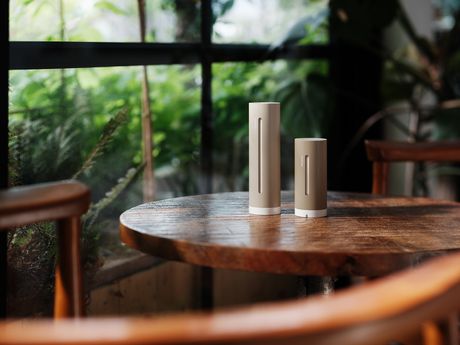
Netatmo unveils the new Weather Station ORIGINAL

Up to 50% off selected productsBuy

If you’ve been thinking about the cost of your home security system, you’ll likely have been totting up the price of security cameras, security alarms, motion sensors and other monitoring systems, whether they’re wired or wireless options.
Then, you’ve got the cost of installation – but, if you go for wireless home security systems, you might be able to save on that by opting for the DIY installation approach. Even if you feel the cost of professional installation services is well worth paying for, you still might not have considered the potential additional cost that will follow.
Not heard of alarms working via subscriptions? This is a hidden home security cost that is often overlooked, so we’ll go into more detail here.
Global System for Mobile, or GSM, home security alarms work by connecting to the surrounding cellular network. This provides an effective monitoring feature, as you receive a text message as soon as your home security alarm is triggered. But, the subscription cost comes on top of the costs of the alarm itself, plus the installation.
Whether your new home security system is going to be wired or wireless, the purchase price might include the cost of a maintenance subscription. That will mean your home security provider regularly maintains your home security systems, checking they’re still functioning as they should. That’s no bad thing, of course, but make sure you know you’re taking on that cost at the time of installation!
Some home security cameras add in an additional cost to enable you to access the footage recorded on your property from its storage files. If you want to save on that cost and have more flexibility with your home security cameras, you might want to consider connecting your security cameras to cloud storage.
You might want to choose a home security system that will alert your home security provider to the presence of an intruder on your property. If your motion sensors, security alarm or security cameras are set off, your home security provider will receive a real time alert. So, they’ll be able to respond accordingly. That will involve kicking in their protocol to deal with the intruder and the incident, as well as informing you, as well as possibly the police. Of course, contracting a company to provide this monitoring service for your property will add up to an additional cost. It’s totally up to you whether this type of monitoring system is the right choice for your home security set-up.
If you’ve taken out a home insurance policy, you’ll need to make sure that your home security installation matches up with the requirements for the insurance cover for your property. If your home security system doesn’t totally comply, you could be in trouble if an intruder does break in to the property. You may not be eligible for insurance cover to pay back the cost of the break-in and the items stolen, so you’d be hit with full cost of the incident.
To avoid a similar situation, double check the requirements of your home insurance policy. Make sure the security installation you’ve got in and around your property covers the whole set of specifications.
Sticking with the insurance theme, a home security system could also be vital to proving the facts of your insurance claim if there has been an intruder in your home but there’s been no sign of a forced break-in. For example, if a burglar simply enters the property through an open window, there may be no way of proving to the police or the insurance company that a theft actually took place.
Then, you’d be hit with the entire cost of covering the items lost in the incident, without any help form your insurance cover. Home security cameras, for example, could provide vital video evidence of the incident, which could swing the insurance claim in your favour.
Luckily, it’s absolutely possible to choose home security systems that won’t land you with ongoing subscription costs, as well as the price of the security devices themselves and their installation
Always make sure you ask for a quote before purchase and installation of home security systems. That way, you can make sure you’re not hit with added cost! Netatmo smart home security systems don’t operate on subscriptions and contain no hidden fees. Just, straightforward, smart and secure options for your property. Check out our Smart Indoor and Outdoor Cameras, Netatmo Smart Video Doorbell, Netatmo Smart Alarm System and Smart Door and Window Opening Sensors to start creating a fully integrated home security system.
If you’re a smartphone user, why not consider installing smart home security systems that can link up directly to an app on your phone, or other smart devices?
After installation, you’ll be able to receive real time notifications to your smart devices if any of your security sensors, alarms or other monitoring devices are set off by an intruder on your property.
Plus, you might even be able to live stream the footage from your security cameras straight to your devices, so you can effectively monitor what’s going on. These smart systems increase your control over your home security systems, too. You’ll be able to remotely trigger, or turn off, any of your security sensors, alarms, cameras, or further monitoring devices from anywhere, at anytime.